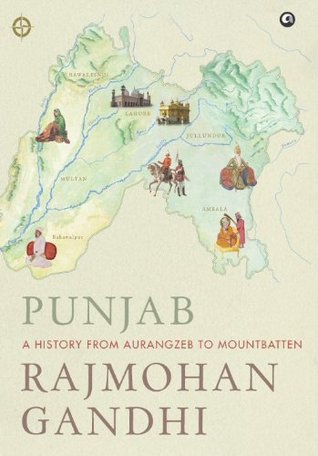More on this book
Community
Kindle Notes & Highlights
surmised,
mutineers
trudged
‘cleave
reconnoitring
batteries
cantonment
‘Poorbeah
flouted,
Lord Palmerston, the British Prime Minister, had backed the demand.
The line revealed the core of a firm new policy: separate Hindus from Muslims, and never again permit the two to join hands.
Linked to Mangal Pandey, ‘Pandy’ was now the favoured British term for a sepoy. A few months later, writing to another English general, Mansfield, Lawrence repeated his worry: In round numbers the Punjabi troops of various kinds cannot fall short of fifty thousand men!... If we allow the Punjabis to feel their strength, we may one day have as much trouble with them as with the Hindustanis. Their use against surviving rebels, added Lawrence, called for astuteness. I would leave… a greater proportion of Sikh cavalry in Rohilkund, where the people to guard against are Mohammedans, and take
...more
In London, Parliament marked the British triumph by abolishing Company rule and asking Queen Victoria to assume the governance of India. In her name, Parliament and ministers would control India, where the Governor-General would henceforth be called Viceroy as well.
imperialist
antiquity
promiscuously
Thus the man with the biggest grant in the second canal colony, Sohag Para (located in Montgomery district), was Baba Khem Singh Bedi of Rawalpindi district, an eminent Sikh figure from Guru Nanak’s Bedi clan. He received several hundred squares in Sohag Para, amounting to no less than 7,798 acres.
(peasants),
(yeomen),
The Raj’s answer to the scheme’s abuse was the Colonisation Bill of 1906, which empowered the provincial government to enforce its conditions of tenure in colony lands by summary or executive process, i.e. without initiating proceedings in civil courts. An uproar resulted. Throughout 1907, the Bill was assailed in a number of meetings held in the colonies and in Punjab’s journals, including the Tribune and the Zamindar of Lahore. Muslims, Sikhs and Hindus seemed united in their criticism.
young Ajit Singh’s call to the Jat peasant to guard his honour, ‘Pagdi Sambhal, Jatta,’ evoked a popular response. It was also ‘the refrain of a song recited by Banke Dayal’ on this occasion.23 Ajit Singh and Lajpat Rai were both arrested and sent to Burma.
proselytizing
Anjuman-i-Islamia.
Nirankari movement.
Published in Hindi in 1875, his Satyarth Prakash (Light on the Meaning of Truth) had urged Hindus to return to ‘the pure monotheism’ of the Vedas. The book had also criticized Christianity, Islam, idolatrous or corrupted Hinduism, and Sikhism. The Swami’s other views are also of interest. He advocated a woman’s right to read scripture and educate herself, opposed untouchability, and held that Europe owed its technological and scientific success not to Christianity but to India’s ancient ‘Aryas’; in the modern age, however, Indians should learn from European virtues and achievements.
vituperative
the Raj took comfort from the fact that Muslims, Hindus and Sikhs were not thinking of a common platform.
luminary
schisms
Rudyard Kipling
preachers
spurned
In 1881 in Multan, a Hindu demand for a total ban on cow-slaughter coincided with a controversial plan to elevate the spire of Multan’s Prahladpuri temple. Though a minority, Multan’s Hindus were being assertive. A butcher and two mosques were attacked but retaliation destroyed or damaged twenty-three Hindu temples. In protest, Hindus suspended all trade for a few days.
However, commotions died down fairly quickly and normal life returned. Also, ‘there were instances of mutual help and cooperation’. In September 1883, Hindu and Muslim leaders in Hoshiarpur jointly appealed for cooperation at a large public meeting chaired by a Christian. Three years later, in Ferozepore, ‘a number of Muslims contributed subscriptions for a Ram Lila procession’ and ‘on the whole supported the Hindus’ campaign against the opening of beef shops in the city’. Hindus attended Muharram congregations in Lahore, and in the 1893 Isa Khel disturbance ‘several Hindu shopkeepers
...more
commotion.
appeased.
exertions
Desirous
deplored
Hunter Committee on the Punjab events. Although Dyer was held guilty of ‘a grave error of judgment’, the report offered weak recommendations and exonerated O’Dwyer. Worse, the House of Lords gave Dyer a vote of approval and British admirers presented him with a sword of honour and 20,000 pounds.
ascendancy,
ferment
galvanized
A non-cooperating or prison-going Iqbal could have prevented this from happening, but he stayed out, as did Fazl-i-Husain. Despite energetic efforts, men like Zafar Ali and Kitchlew were unable to enthuse Muslim Punjab for Non-cooperation, which received an early blow in November 1920 when Fazl-i-Husain, who in the previous year had headed the Punjab Congress and the Punjab League, announced his intention to enter the new council.
His rejection of Non-cooperation was a coup for the Raj.


